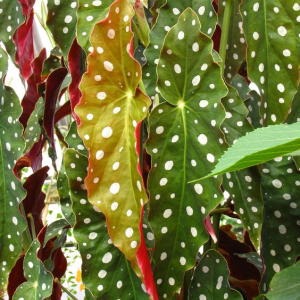- English
- Chinese
- French
- German
- Portuguese
- Spanish
- Russian
- Japanese
- Korean
- Arabic
- Irish
- Greek
- Turkish
- Italian
- Danish
- Romanian
- Indonesian
- Czech
- Afrikaans
- Swedish
- Polish
- Basque
- Catalan
- Esperanto
- Hindi
- Lao
- Albanian
- Amharic
- Armenian
- Azerbaijani
- Belarusian
- Bengali
- Bosnian
- Bulgarian
- Cebuano
- Chichewa
- Corsican
- Croatian
- Dutch
- Estonian
- Filipino
- Finnish
- Frisian
- Galician
- Georgian
- Gujarati
- Haitian
- Hausa
- Hawaiian
- Hebrew
- Hmong
- Hungarian
- Icelandic
- Igbo
- Javanese
- Kannada
- Kazakh
- Khmer
- Kurdish
- Kyrgyz
- Latin
- Latvian
- Lithuanian
- Luxembou..
- Macedonian
- Malagasy
- Malay
- Malayalam
- Maltese
- Marathi
- Mongolian
- Burmese
- Nepali
- Norwegian
- Pashto
- Persian
- Punjabi
- Serbian
- Sesotho
- Sinhala
- Slovak
- Slovenian
- Somali
- Samoan
- Scots Gaelic
- Shona
- Sindhi
- Sundanese
- Swahili
- Tajik
- Tamil
- Telugu
- Thai
- Ukrainian
- Urdu
- Uzbek
- Vietnamese
- Welsh
- Xhosa
- Yiddish
- Yoruba
- Zulu
- Kinyarwanda
- Tatar
- Oriya
- Turkmen
- Uyghur

Te tipu whakapaipai rongonui me te ataahua o te puawai me nga hua o te rau benia. It is extensively used for interior decorating and outdoor flower beds and is fundamental in gardening. Among many elements, variety, ambient conditions, care and management influence begonia’s development rate.

Cane begonia
Nga waahanga o te tipu begonia
Begonia consists of many species and variations, hence each plant may have distinct growth traits. Generally speaking, begonia’s natural growth patterns and culture environment influence both its pace of development and pattern. Begonia’s growth cycle, flexibility, and variations in growth rate define its features of development.
Huringa Whakawhanake
Beside seed germination, seedling development, maturity, and blooming, begonia’s growth cycle consists of various phases. Environmental factors and maintenance actions might influence the length and pace of development at every stage.
Te whakatipu uri
I te nuinga o te waa, ka tupu te purapura begonia i roto i te taiao mahana me te mahana. Ko te tikanga, ka tipu nga purapura e rua ki te wha wiki. Ko te whānuitanga o te pāmahana tika te 20 ki te 25 nga nekehanga Celsius; Te oneone maku me te ra ka tukua ano e nga purapura kia tipu.
Te Whanaketanga Huero
Seedlings develop quicker as the seeds germinate. Usually, begonia’s seedling stage lasts many months. The seedlings require enough light and appropriate temperature during this stage to enable their explosive development. Furthermore influencing the development rate of seedlings are soil fertility and water management practices.
Tau o te wheako
Depending on the type and growing environment, begonia from seedling to mature plant typically takes six to twelve months in growth cycle. Although the plant’s development rate could slow down throughout the mature age, it still needs constant care to maintain health and vitality.
Wā pua
Kei runga i te ahua o te tipu o te āhuarangi me te momo, a begonia te nuinga o te tipu mai i te puna kia hinga. He kaha ake te awe o te roanga o te waa puawai me te nui o nga puawai te tipu tipu me te hauora.
Variables influencing begonia’s growth rate
Among other elements, ambient conditions, soil quality, light, temperature, water and nutrients influence begonia’s development rate. Knowing how these elements influence growth rate will enable maintenance management to be optimized and begonia healthy development encouraged.
Rāpora
Ko te kaha o te tipu o te tipu o te tipu i runga i te maarama. Ko te tikanga, begonias rite te taiao-kanapa o te semi, te maama ranei te maama. Ka taea e te maama te akiaki i te whakaahua whakaahua me te whakaara i te reanga whanaketanga tipu. Ahakoa te marama kaore i te marama ka roa te roa o te whanaketanga me nga puawai iti, ka nui rawa te ra e kaha ana te ra. Na reira, he mea nui ki te whiriwhiri i tetahi waahi e tika ana hei whakapumau i te marama o Begonias i te wa e tipu haere ana ratou i roto i nga whare.
pāmahana
Begonia growth rate is highly influenced by temperature. Begons’ ideal range of growing temperature is 20 to 25 degrees Celsius. The plant develops quickest within this temperature range. Extreme temperatures either too hot or too low might cause sluggish development and possibly impact plant health. Usually, indoor temperatures in winter should be maintained within an acceptable range to guarantee appropriate plant development.
Rotoora
Though rarely flooded, begonias must maintain wet soil. While lacking water can cause the plant to dry out, overwatering can lead to root rot. The soil moisture and the plant’s growth requirements will help one to modify the suitable frequency of watering. The ideal water balance may be maintained by using well-drained soil and drainage holes at the bottom of the container.
Whenua
Ko te reanga hauora me te tipu o te begonia e tino whakaawe ana i te kounga o te oneone. Begonias rite te wewete, te taonga, te pai o te oneone. Ko te ihirangi o te oneone o te oneone ka kaha te tautoko i te tipu pai o te punaha pakiaka me te whakarato i nga matūkai ko nga matea tipu. Ka whakatokia nga begonias ki runga i te whakakotahitanga o te humus, te oneone tihi me te onepu.
Metals
Begonia development rate depends on the availability of nutrients, hence they are very important. For their development, begonias need enough main nutrients like nitrogen, phosphorous, potassium, and trace elements. Frequent fertilization can provide the nutrients the plant needs to support development and blooming. The correct fertilizer and application technique will help the plant’s growth rate to be much raised.
Waiteatanga
Ano te awe o te reanga whanaketanga a Begonia he hau ma te hau. Kei roto i nga waahi kari, ko Begonias e rite ana ki te tino haumākū. Na roto i te haumuruhi, te whakainu noa ranei, ka whakaara ake i te hau i te whakatipu i roto, na reira ka taea e te tipu te noho ki tetahi ahuatanga whanaketanga.
Me pehea e whakanui ai tetahi i te tipu o te tipu o te tiimata?
Me whai nga mahi whakatikatika hei whakarite kia taea ai e te begonias te whakawhanake i raro i nga ahuatanga pai me te whakanui i a raatau tipu. Ka kapi tenei i te whakahaere o te maama, te pāmahana, te wai, te oneone, te matūkai, te makuku.
Te mana o te whakamarama
Maximizing the development rate of begonias depends on getting them adequate light. Plants may be positioned close to windows in indoor horticulture to acquire strong natural illumination. Plant growth lights may be utilized to augment the inadequate light in surroundings. Furthermore, the plant’s orientation is changed often to guarantee that the light source may reach every area of it.
Te Whakatupato
The pace of growth of begonias depends on maintaining an appropriate temperature range. Heaters may be utilized in winter or the plant’s location can be changed to keep the temperature within range. Summer calls for you to be alert to prevent too high temperatures. The ambient temperature may be changed depending on need using fans or air conditioners.
Te whakahaere wai
Check the soil moisture often; then, modify the watering frequency based on the plant’s requirements. Maintaining the moisture in the soil, steer clear of stationary water. Using well-drained soil and containers helps avoid root rot. In dry conditions, water more regularly to satisfy the demands of the plants.
Te whakahaere oneone
Select an appropriate soil substrate and routinely modify the soil to maintain its loosenness and fertility. Including humus and organic fertilizers may raise the soil’s nutritional value and stimulate plant development. Regularly check the soil’s drainage to ensure it is neither overly wet or compacted.
Te waatea kai
Tīpakohia te tongi tika i runga i nga tono tipu me te waahanga whanaketanga. Ko nga waahanga tipu pai rawa atu mo te begonias he puna me te raumati, na reira ka rua pea koe ki te whakatipu i te whakatipu me te whakarato i nga matūkai nui. Te tono i te tongi taurite (penei i te 10-10-10) me te tongi i hangaia mo te begonias e whai ana i nga tohutohu. He maamaa te ngoikore ki te karo i te tahu tongi.
Te whakahaere i te haumākū
Ko te whakapiki ake i te makuku o te hau ka awhina i te begonias ki te pai ki te hauora i roto i te taiao. Ki te whakaara i te makuku, ma te whakatakoto i tetahi paepae wai makuku huri noa i te tipu, i te whakahaere ranei i te horohi. Waihoki, ko te whakamakuku tonu te awhina i te tipu ki te pupuri i te makuku e tika ana.
Nga raru a Begonia me nga miihini kape
Kei te raru tonu a Begonias i te tipu ake ahakoa ka whanake tere i raro i te taiao tika. Ko te reanga whanaketanga o te tipu ka taea te whakatutuki, hei tauira, na te rereketanga o te taiao, nga pepeke me nga mate, te whakahaere tika, me etahi atu mea. Koinei etahi raru tino uaua me etahi miihini kape:
Mate me nga mate
Ko nga pepeke noa me nga mate ko te aphids, nga pungawerewere, me te paura ko te koriri ka whakararu i te begonias. He maha nga rau me nga mahi pakiaka o nga tipu ka awhina ki te tautuhi me te whakaora i nga mate me nga riha wawe. Te rehu i te raina me nga tohutohu ma te whakamahi i nga fungicides e tika ana, e pai ana ranei. Ko te pupuri i nga tipu ma me te hauora ka awhina i te whakaheke i te pepeke me te tino mate.
Whakarerekētanga o te taiao
Ko nga whakarereke o te taiao tino rereke, te maamaa kaore i te marama, i te iti ranei te makuku e kaha ana ki te awe i te tipu o te whanaketanga o Begonia. He mea nui kia whai whakaaro ki te pumau o te taiao i te maara, me te ngana ki te whakaiti i te ahotea kore i runga i nga tipu. Hurihia nga taiao kia tupu ai nga tipu ki nga ahuatanga pai.

Benia
He maha nga waahanga Whakawhanake Whiriwhiria Whakatauhia: Maama, Te pāmahana, te wai, te kounga oneone, te waatea o te kai, me te haumākū. He pai te whakaaro kia pai te tipu o te tipu, te pupuri i te pāmahana tika o te 20 ki te 25 nga nekehanga Celsius, ka whakahaerehia te wai me te hiahia ki te whakanui i tana reanga whanaketanga. Ko te mea nui kei te pupuri i te hau nui o te hau me te urupare tere ki nga pepeke me nga mate. Ko te whakarereke tika o enei mea ka awhina i te tipu o Begosian me te hauora, na reira ka pai ake to raatau uara whakapaipai me te paanga ahuone.
Previous News
Nga tikanga whakatipuranga a Aphelandra DaniNext News
Te tiaki me te whakatipu syanganium pixie


